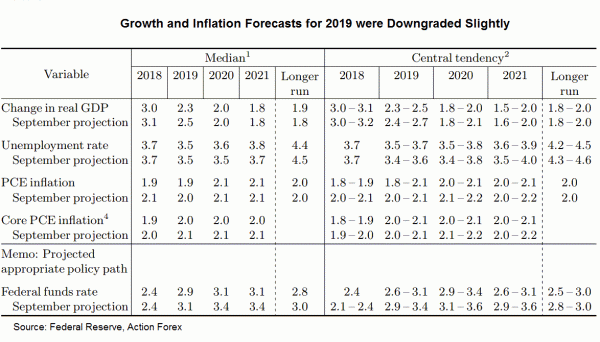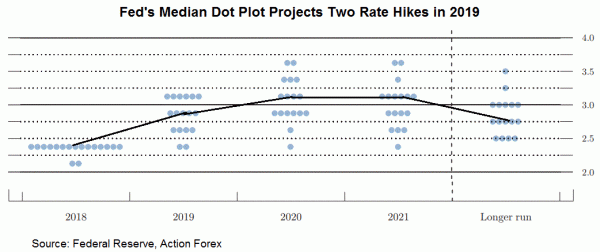The December FOMC meeting outcome is expected, yet unexpected. As widely anticipated, it raised the policy rate, by +25 bps, to 2.25-2.5%. The IOER rate was raised by +20bps. The members trimmed the rate hike forecasts to two, form three, for September. They remained upbeat about economic outlook, but turned more cautious for the developments ahead. Yet, the members were not as dovish as expected. As Chair Jerome Powell noted, the members have “seen some developments that signal some softening”. These “developments have not fundamentally altered the outlook”. The change in forward guidance was subtle, while the downward revisions on the economic projections were modest.
There were a few changes in the accompanying statement. Acknowledging the strength in the employment market, the members noted that the unemployment rate has “remained low”. In September, they indicated that the unemployment rates “has declined”. The change in language merely reflects the situation that the unemployment rate has steadied at 3.7%, the lowest level in over 40 years, since September.
On the forward guidance, the FOMC retained the view that “further gradual increases” in the Fed funds would be required to achieve the dual mandates. While the word “some” was added before “further gradual increases” at the December reference, the Committee did not elaborate on the meaning of “some”. The members judged that “risks to the economic outlook are roughly balanced”, adding the pledge that they would “continue to monitor global economic and financial developments and assess their implications for the economic outlook”.
The closely-watched median dot plot signals two more rate hike (each by 25 bps) in 2019, down from three as projected in September. Meanwhile, the longer run neutral rate projection was lowered by 25 bps to 2.75%. On the staff economic projections, GDP growth was revised slightly lower for 2018 and 2019, and stayed unchanged for 2020 and 2021. The long-run growth was revised higher slightly. Inflation was revised slightly lower for 2018 and 2019, and stayed unchanged for 2020 and 2021. Core inflation was revised slightly lower throughout the projection horizon.














